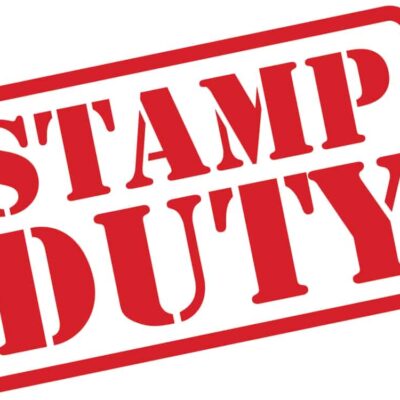Reading time: 4 Minutes
As the winter months settle in, the temperature drops, and we spend more time indoors to stay warm. But with the colder weather comes the perfect breeding ground for a common household issue: mould. If you’re renting a property, mould can be even more of a hassle, as it often means dealing with your landlord or property manager to get things sorted.
Mould not only damages your belongings but can also affect your health. For renters, preventing mould in your home is essential to avoid costly repairs, health risks, and disputes with your landlord. Here are some practical tips to keep your rented property free of mould this winter.
1. Ensure Proper Ventilation
One of the main causes of mould growth is a lack of ventilation. In winter, we tend to keep windows closed to conserve heat, which can trap moisture inside. This moisture can lead to condensation, which mould thrives on.
What to do:
- Use extractor fans in bathrooms and kitchens whenever cooking or showering. If your property doesn’t have built-in ventilation, consider using a portable fan to circulate air.
- Open windows regularly for at least 15 minutes each day to allow fresh air in and reduce humidity levels.
- Avoid drying clothes indoors if possible. If you must, hang them in a room with good ventilation or use a dehumidifier.
2. Use a Dehumidifier
If your home is naturally prone to high humidity levels, a dehumidifier can work wonders. Mould thrives in damp environments, so reducing the moisture in the air will make it much harder for mould to develop.
What to do:
- Place a dehumidifier in rooms that are most prone to moisture, such as bathrooms, kitchens, or areas with poor airflow like basements or attics.
- Keep the humidity level in your home between 30% and 50% for optimal mould prevention.
3. Check for Leaks and Repair Them Quickly
Leaks, whether from pipes, windows, or the roof, can lead to significant moisture build-up. Mould only needs a little water to grow, so even a small leak can be a problem.
What to do:
- Inspect your property for leaks, especially around windows, ceilings, and walls. Pay attention to signs of water stains, peeling paint, or damp patches on walls.
- If you notice any leaks, report them to your landlord or property manager immediately. The quicker the issue is addressed, the less chance mould has to form.
4. Keep Your Home Warm
Mould loves cold, damp spaces. Keeping your rented property warm during the winter months will prevent the temperature from dropping low enough for condensation to form on walls and windows.
What to do:
- Use heaters to keep your home at a consistent temperature. Be sure to heat areas that are more prone to cold, such as bathrooms or hallways.
- Insulate your property where possible. You can use draft excluders on doors and windows to keep the warmth in and the cold out.
5. Clean Up Moisture Immediately
Mould doesn’t just grow on walls – it can develop on carpets, furniture, and even fabric. The longer you leave moisture sitting, the more time mould has to take hold.
What to do:
- If you spill water or notice dampness on surfaces, wipe it up immediately.
- Use a clean, dry towel to absorb moisture from windowsills, walls, or furniture.
- For carpets or fabrics, ensure they dry quickly by using fans or a heater.
6. Keep Furniture Away from Walls
When furniture is placed directly against walls, it can trap moisture behind it. This can prevent air from circulating properly, creating an ideal environment for mould to thrive.
What to do:
- Leave a small gap (around 2-3 inches) between your furniture and walls to allow air to circulate.
- This is particularly important in rooms that are naturally more humid, such as bedrooms or living areas near bathrooms.
7. Use Mould-Resistant Products
If you are allowed to make minor changes to your rented property, consider using mould-resistant products. These can help prevent the growth of mould before it even starts.
What to do:
- Mould-resistant paint is a great option for rooms with high moisture, like bathrooms and kitchens.
- You can also buy mould-resistant bathroom products, such as shower curtains or liners, which are treated to help prevent mould growth.
8. Take Advantage of Silica Gel and Moisture Absorbers
If you have a particularly damp room or closet, silica gel packets or moisture-absorbing products can help reduce humidity levels.
What to do:
- Place moisture absorbers (like silica gel bags or dehumidifier crystals) in areas prone to excess moisture, such as cupboards, closets, or basements.
- These can help draw moisture out of the air, preventing the growth of mould.
9. Keep an Eye on Problem Areas
There are some areas that are more prone to mould growth than others. Be vigilant in checking these spaces, especially during the winter months.
What to do:
- Windowsills: Condensation often forms on windows in the winter, which can create a perfect environment for mould.
- Bathrooms and kitchens: These areas often have high humidity due to steam from showers or cooking. Keep these rooms well-ventilated and check for any mould spots regularly.
- Behind furniture or appliances: Mould can grow in hidden areas where moisture can accumulate without being noticed. Move furniture or appliances occasionally to check for dampness or mould.
Mould is a common but preventable issue in winter. By keeping your home well-ventilated, managing humidity levels, and taking action at the first sign of moisture, you can keep mould at bay. If mould does appear, acting quickly and notifying can help prevent further damage. Stay proactive this winter and make sure mould doesn’t move in with you!




